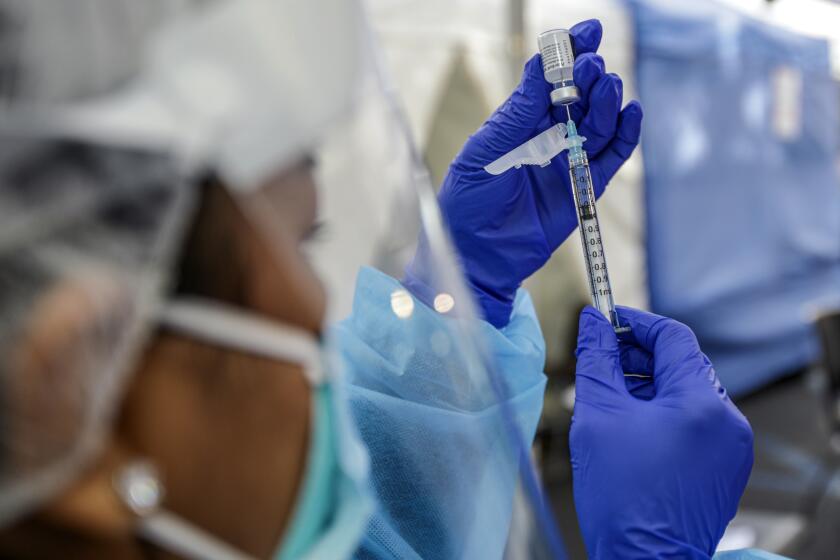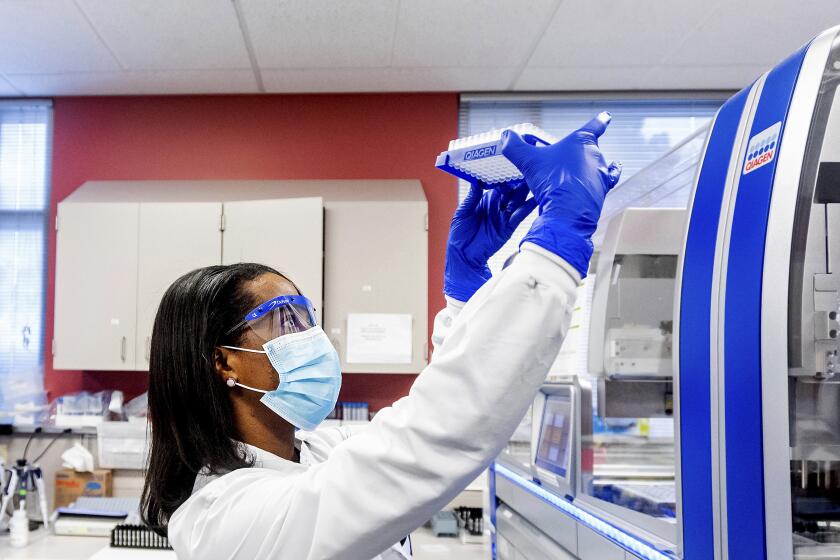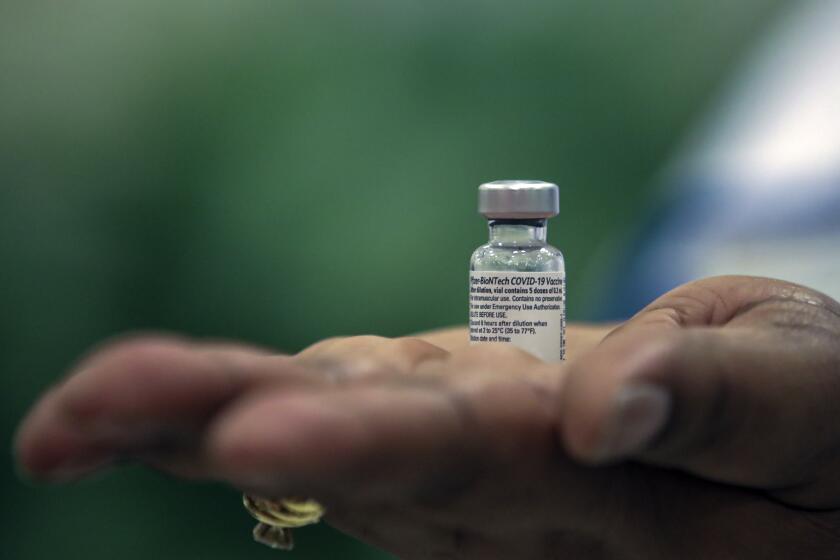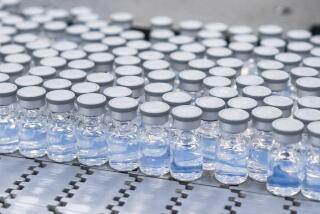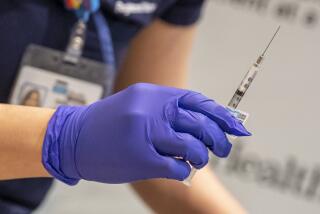Scientists get serious about mixing and matching COVID-19 vaccines
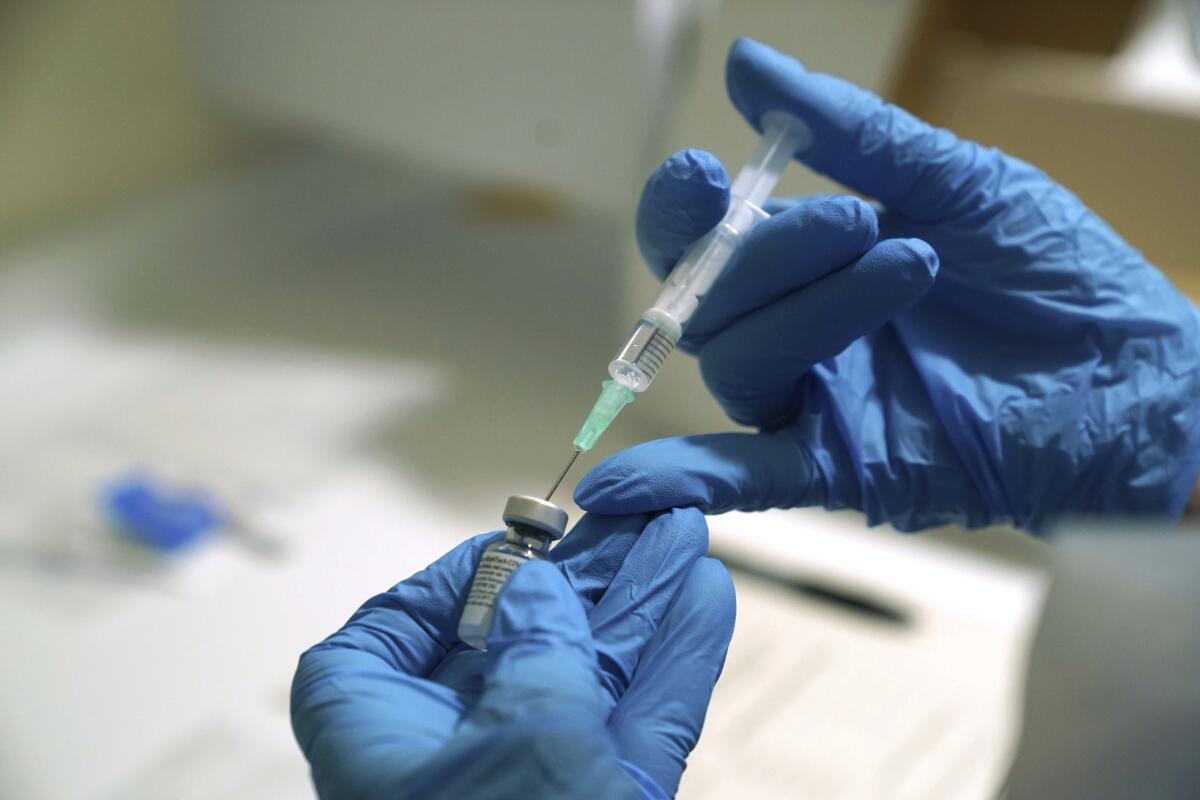
- Share via
A lot of us have engaged in some bold mixing-and-matching during the pandemic — office attire on top, pajama pants on bottom, for instance — and been none the worse for it.
Imagine doing the same with COVID-19 vaccines, perhaps pairing a first dose of the AstraZeneca product with a second dose supplied by Novavax. Will the consequences of such mixing be any graver?
It’s hardly an idle question. Either by accident or design, some mismatched dosing is inevitable, experts say.
Two vaccines are currently being rolled out across the United States, with a third expected to join them next week and two more likely to come over the next several months. All but one were designed to be delivered as two-dose regimens.
An additional 69 vaccines are in clinical development across the globe, and nearly two-thirds of those were designed to generate immunity with two or more doses.
But making sure people get the right vaccine at the right time has turned out to be a greater logistical challenge than initially expected. What’s more, the unexpectedly swift emergence of menacing coronavirus variants has made it imperative to get shots into arms as quickly as possible.
Health officials in Britain proposed a radical solution to both problems: Delay second doses for up to 12 weeks so that more people could get at least some protection. Later, the government acknowledged that in exceptional circumstances, mismatched doses may be given to people who arrive for their second dose and discover that the vaccine they originally had is not available.
It seemed preposterous, especially considering that neither of these protocols was evaluated in clinical trials. If they don’t work, the precious vaccine will have been wasted at a time when there’s none to spare.
Health officials set aside carefully considered plans for rolling out COVID-19 vaccines and made the shots widely available. That may hasten the pandemic’s end.
“I wouldn’t make any changes unless you’ve got good data,” said Dr. Anthony Fauci, director the U.S. National Institute of Allergy and Infectious Diseases. “I don’t think you mix and match without results showing it’s very effective and safe.”
Now British researchers are trying to do just that.
This month, a team of vaccinologists from Oxford University began recruiting 800 or so people age 50 or older for a complex study to see whether vaccine switching could actually work.
Using an eight-armed clinical trial, they’ll test vaccine regimens using various combinations and intervals of the two vaccines currently being dispensed in Britain: one made by Pfizer and BioNTech, and another developed by Oxford and AstraZeneca.
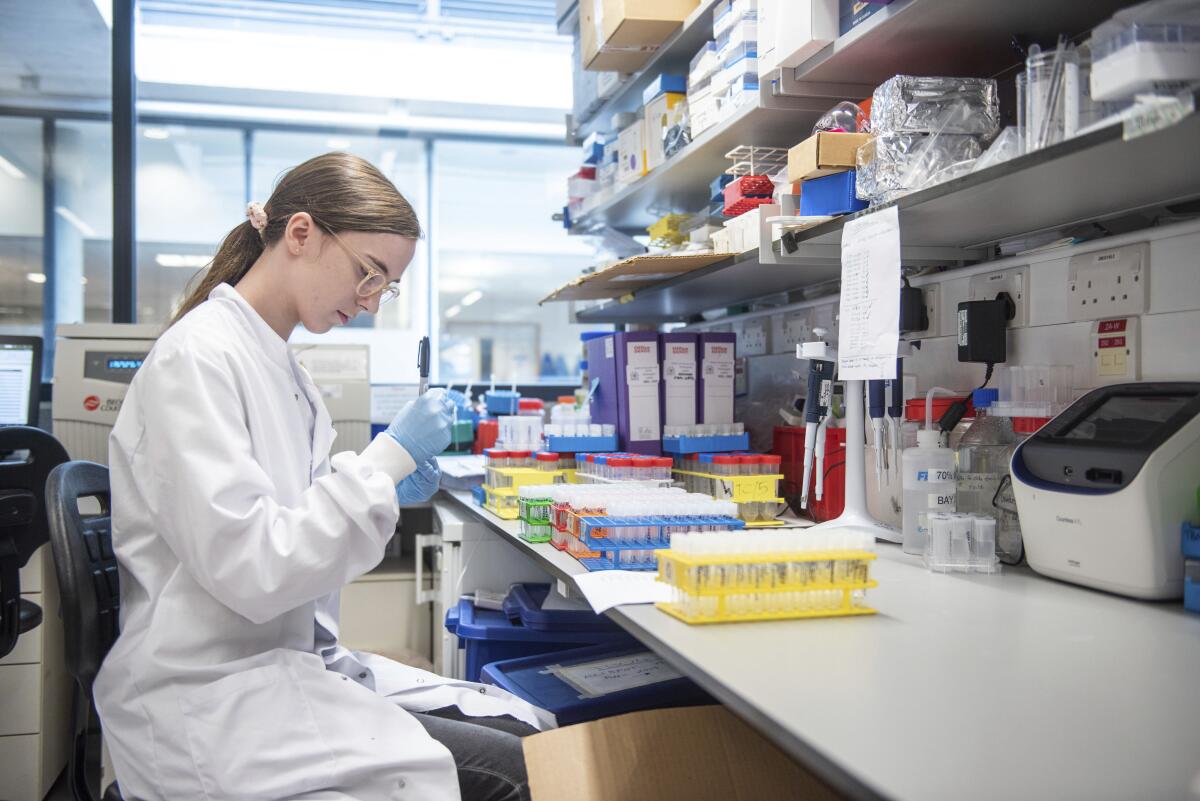
In announcing the mix-and-match vaccine trial, Dr. Matthew Snape cited experiments in mice in which combinations of the Pfizer and AstraZeneca vaccines boosted immunity better than two doses of either one alone. Perhaps it would work in humans as well.
Both vaccines prime the immune system to target the coronavirus’ spike protein, which plays an instrumental role in the infection process. But they home in on different parts of the spike, and they deliver their payloads by two very different means.
The AstraZeneca one uses a modified cold virus to present the spike protein to the immune system, while the Pfizer one hands over genetic instructions for making the spike protein and relies on human cells to produce it.
Additional COVID-19 vaccines made by Novavax and Johnson & Johnson also focus on the spike proteins on the virus’ surface, and researchers expect to add them to the trial as it proceeds. (Johnson & Johnson’s vaccine candidate is designed to be administered as a single dose, but the company is testing whether a second dose, delivered 57 days after the first, would provide a higher level of immunity.)
The British trial is expected to release its findings in June.
The Biden administration is boosting efforts to identify and track coronavirus variants to help scientists see where the pandemic is heading next.
That mouse study cited by Snape has encouraged scientists’ belief that combining vaccines will kick the body’s immune system into a higher gear. By nudging it through different means and training it to recognize new and different pieces of the virus, these mismatched regimens could not only generate neutralizing antibodies but boost production of a specialized class of immune cells called CD8+ T-cells.
The neutralizing antibodies that are produced in response to most vaccines specialize in hunting down and killing free-floating viral particles as they circulate in the bloodstream. Fielding an army of CD8+ T-cells as well would empower the immune system to find and kill cells that have already been infected and turned into virus-copying factories. That would end an infection faster and more completely.
These T-cells also have long and specific memories of what the SARS-CoV-2 virus looks like. That means immunity might last longer when this army of immune cells is strongly recruited.
Though mixing and matching vaccines awakened these T-cells in mice, the same response has not yet been demonstrated conclusively in humans. Nor have studies borne out scientists’ hope that mismatched vaccines can be safely administered to millions of healthy people.
One potential benefit of mismatched vaccines is that if the two shots target different sets of proteins on the virus’ surface, the immune system would be prepared to face a wider array of threats. That might preserve or improve vaccine-induced immunity as new variants of the virus arise.
The emergence of a new strain in South Africa has underscored the importance of having such a backup. After evidence surfaced that the variant was less susceptible to Astra-Zeneca’s vaccine, Moderna began work on a modified shot specifically tailored to protect against it. Doses of the booster vaccine were sent to the National Institutes of Health for testing this week, and a new clinical trial will explore whether it expands the immunity of people who’ve already been vaccinated against COVID-19.
But there is recent precedent for combining vaccines that use different vehicles to deliver their immunological payloads.
The two doses of Russia’s Sputnik V COVID vaccine, for instance, use two kinds of viruses to transport the genetic instructions that tell the immune system which coronavirus surface proteins to look for. The first is a harmless cold virus. For the second shot that comes 21 days later, scientists engineered another innocuous cold virus to carry the cargo.
This way, there’s no chance the immune system will inadvertently attack the harmless cold virus when it’s time for the second dose. With a new ride, the vaccine’s genetic payload can slip by unchallenged.
Russia’s Gamaleya Research Institute, which designed Sputnik V, took a similar approach to formulating the first and second doses of its Ebola vaccine. Several experimental HIV vaccines are also testing this approach.
Health experts hope to nudge people of color to the front of the COVID-19 vaccine line without explicitly saying race, ethnicity influence priority.
The COVID-19 vaccines made by Pfizer-BioNTech and Moderna use the same mRNA “platform” that prompts cells to construct harmless spike proteins that the immune system will learn to recognize. However, they encapsulate their instructions in very different packages (which may explain why the risk of a severe allergic reaction called anaphylaxis is more than four times higher for the Pfizer-BioNTech vaccine than the Moderna one, though both are extremely low).
In late January, the U.S. Centers for Disease Control and Prevention told medical professionals they could offer a mismatched second dose of mRNA vaccine “in exceptional situations in which the first-dose vaccine product cannot be determined or is no longer available.”
But there’s a reason every multi-dose vaccine on the U.S. market — from the hepatitis B shots that start just after birth to the shingles vaccine series for adults in their 50s — comes with a recommendation to get all doses from the same manufacturer: Their safety and efficacy have been tested as an established pairing. Mix-and-match combos have not.
The problem with testing the safety and efficacy of mix-and-match combinations is compounded by the complexity of the immune system.
“What we know to measure is only half the story,” said Dr. Gregory Poland, a vaccine researcher at the Mayo Clinic in Rochester, Minn. The British mix-and-match trial will measure the amount of antibodies in the bloodstream, but actual immunity is more complicated than that. Immunity brought about by neutralizing antibodies and immunity brought about, say, by CD8+ cells complement each other in mysterious ways.
“If you alter one component of that, you no longer know if you have the same efficacy and safety,” said Poland.
But this level of caution may be a luxury we can’t afford in a public health emergency.
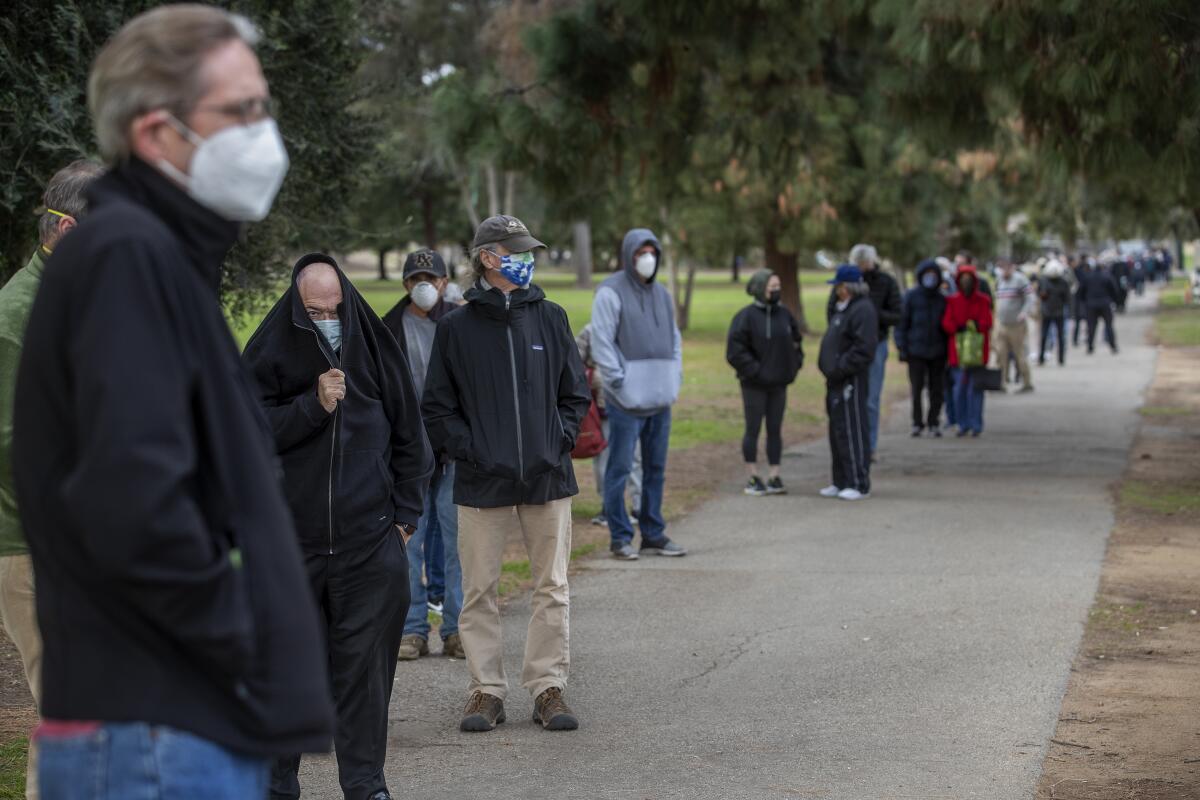
In the midst of a pandemic, a natural experiment in mixing and matching may be unavoidable. Snarls in vaccine production and distribution are bound to happen, imperiling guaranteed on-time access to a second dose that matches one’s first.
People in search of their second shot may not even remember what they got the first time around. And many may be willing to take whatever they can get.
“There’s the ideal and there’s the necessary borne of the practical,” Poland said. “Absent clinical trials, you do studies on the fly. But you’d like to have studies.”
